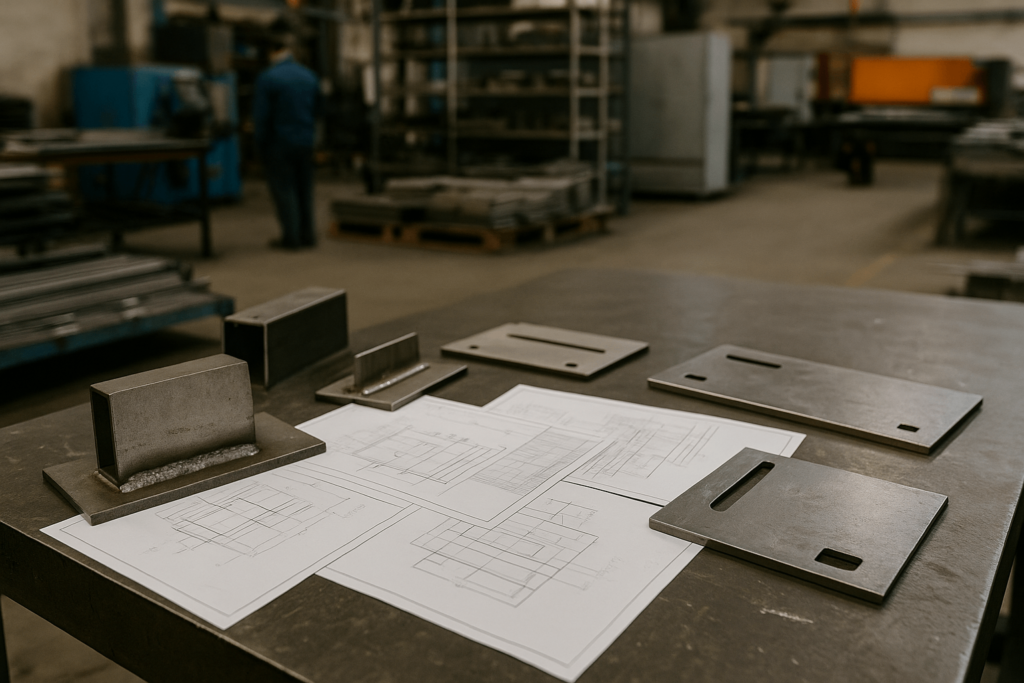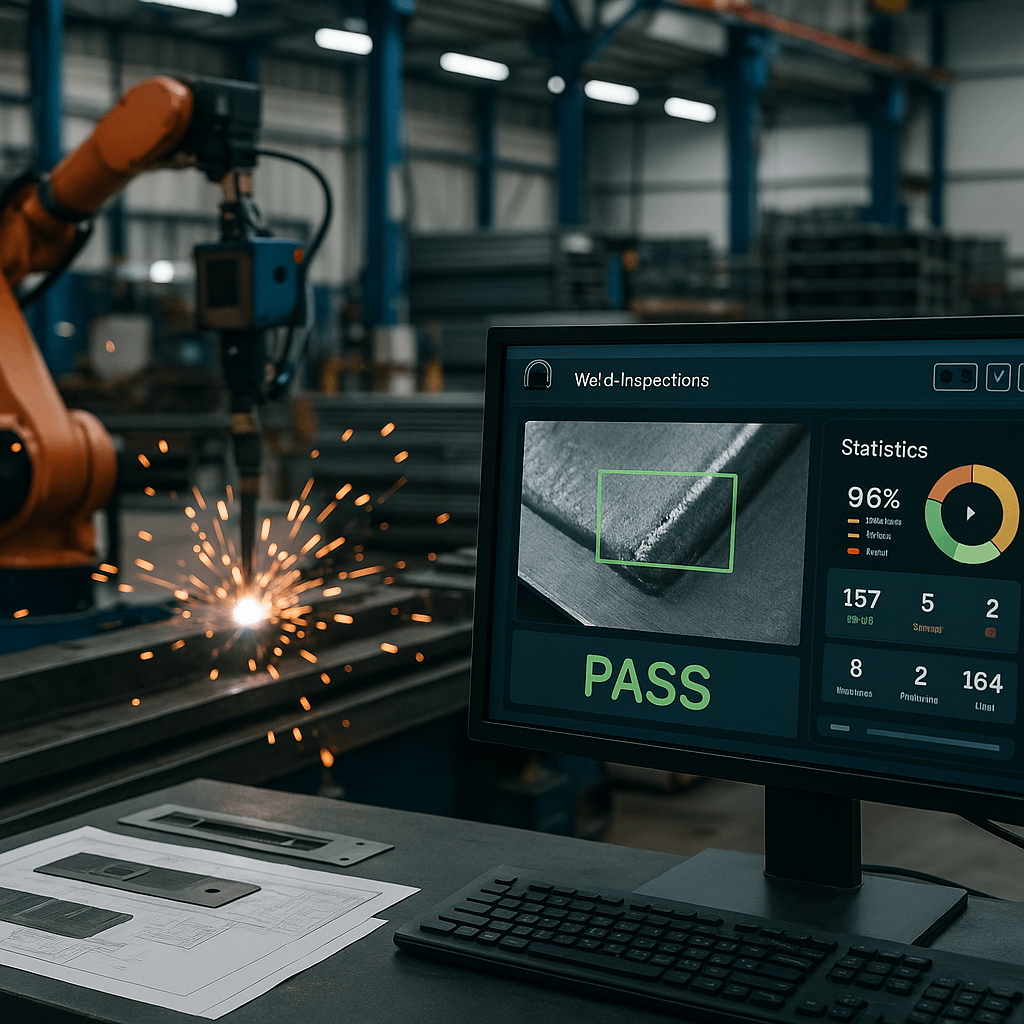The Hidden Cost of Invisible Errors: What Welding Defects Really Tell Us
Why Welding Defects Matter for Wholesale Buyers
Welding defects reflect operational blind spots. In the context of B2B supply chains, particularly for wholesale buyers, they aren’t just surface blemishes—they affect cost, delivery, and long-term trust. A hairline crack on a sheet metal enclosure or a porosity void in a structural kiosk frame may trigger more than rework: they can halt assembly lines, delay shipments, and even compromise product performance.
For global procurement professionals, welding quality is a strategic priority. It’s not just about aesthetics or strength—it’s about long-term reliability under operational stress. Inconsistent welds introduce uncertainty, and in contract welding and fabricating, uncertainty equals risk. Especially in the welding industry, where delivery terms are tight and product liability matters, every rejected part creates ripple effects.
Defects Are Signals of Systemic Weakness
Many defects stem from deeper issues: inconsistent materials, lack of process control, or human error. Buyers need to recognize that the visible defect is often just the symptom. Addressing defects requires an upstream view of manufacturing maturity, not just repair procedures.
Rethinking 'Defects': Why Most Weld Failures Are Not What You Think
Most discussions define welding defects: cracks, porosity, undercuts. But to make informed sourcing decisions, buyers must understand why they recur and how they can be systematically prevented. Successful welding is rarely just about the operator’s hand—it’s about the upstream process.
Consider porosity. When gas flow and voltage appear within spec, causes of porosity in welding may trace back to oil residues on coils or inconsistent shielding gas quality. Visual inspection alone won’t catch these issues. Only traceable systems tied to material input and machine behavior expose real trends.
This systems-level visibility is crucial for buyers sourcing custom parts, where high repeatability and low defect ratios shape procurement success. Identifying whether a manufacturer has reliable quality infrastructure can significantly affect sourcing outcomes.
Where Defects Start: The 4 Invisible Entry Points of Welding Failure
Design-Level Errors
Many wholesale projects start with client-submitted drawings. But designs with obstructed access or awkward joint placement challenge even skilled welders. Whether using gas tungsten arc welding or gas metal arc welding, limited accessibility undermines consistency. Understanding the weldability of sheet metal assemblies is crucial at this stage.
YISHANG reviews every incoming design for joint structure, gap tolerance, and fixture feasibility. This design-for-weldability step ensures quality from the beginning, supporting consistent results across repeated runs.
Material-Level Compromises
Unprepared surfaces or inconsistent stock lead to inclusions, poor penetration, or heat-affected zone distortion. Even top-tier alloys like 4130 steel or aluminum require process-specific prep.
YISHANG maintains a multi-point surface treatment protocol to ensure contaminant-free, uniform materials. This consistency minimizes porosity risk and enhances structural integrity, reducing the need for downstream inspection.
Operator-Level Variation
Manual welding introduces human variation. Small shifts in arc angle or torch travel produce flaws such as undercuts or overlaps. These aren’t always mistakes—they’re cumulative drift over hours.
Our operator interface displays live parameter ranges and deviation alerts. With this data feedback, each team member remains aligned to target standards, improving consistency from weld to weld.
Process Drift
Equipment drift affects gas shielding, wire feeding, and arc control. Over time, even calibrated machines deviate, especially under volume production.
We monitor and log all equipment parameters digitally. When porosity spikes during high humidity or crater frequency rises on certain stations, we can identify trends, act swiftly, and prevent defect propagation.
Detecting What the Eye Can't See: A Realistic Approach to Defect Recognition
Visual inspection isn’t enough—especially when parts must integrate across borders. But full-scale radiographic or ultrasonic testing isn’t always viable for cost reasons. That’s why layered inspection strategies are essential:
| Method | Best For | Limitation |
|---|---|---|
| Visual + Checklist | Obvious weld faults | Operator variability |
| UT / RT | Internal flaws | High cost per unit |
| Camera-Based Monitoring | Consistency across batches | Setup complexity |
YISHANG applies camera tracking on key structural welds and photo logging on inspection samples. This enables remote quality validation and documentation for audits.
In contract manufacturing for welding, knowing how to inspect welds in mass production environments can significantly reduce downstream failure rates. Wholesale buyers rely on layered quality control frameworks to maintain consistent supply chain standards.
Fixing the Root, Not the Weld: A Manufacturer’s Preventive Playbook
Quick cosmetic fixes won’t solve structural problems. That’s why we focus on first-pass yield, aiming to eliminate root causes rather than covering symptoms.
Gap Control: Joint prep is validated before welding to maintain expected arc behavior.
Feedback Interfaces: Alerts highlight temperature or voltage deviation in real-time.
Digital Defect Logs: Traceable records allow trend mapping over time and by operator.
This approach supports clients seeking reliable volumes with minimal oversight—a necessity in global B2B procurement workflows. It’s a core principle in welding quality control in contract manufacturing where traceability and accountability are non-negotiable.
Traceability for Custom Welding: What It Enables
In custom fabrication, no two parts are identical. Traceability ensures accountability in environments where volume meets variation.
We batch-code welds, tag by shift, and associate data with part IDs. This allows fast failure diagnosis, supports documentation audits, and builds trust. Whether you’re evaluating welded joints against rivets or soldered seams, traceability brings transparency.
Welding Culture: The Underestimated Quality Driver
Sustained quality isn’t just equipment or training—it’s culture. At YISHANG, team-led defect reviews and feedback sessions create continuous improvement. Operators take ownership of results because systems respect their input.
This collaborative environment enables scalable quality, not just one-time inspection pass rates. For buyers, it means fewer surprises and better long-term partnership outcomes.
The Weld as a Signal: What Inconsistent Welds Suggest
Welding is the last mile of fabrication. When inconsistency shows here, upstream issues likely exist—whether in machining, material flow, or fixture repeatability. In this way, the weld becomes a diagnostic signal for system maturity.
Buyers evaluating vendors should treat welding performance as an indicator, not just a spec. Consistent, defect-free welds reflect structured systems—and that structure protects every order.
Final Thought: In high-stakes procurement, the priority isn’t flawlessness—it’s consistency, traceability, and responsiveness. YISHANG delivers not just welds, but control and predictability.
Send us your specs. We’re ready to support your success.




